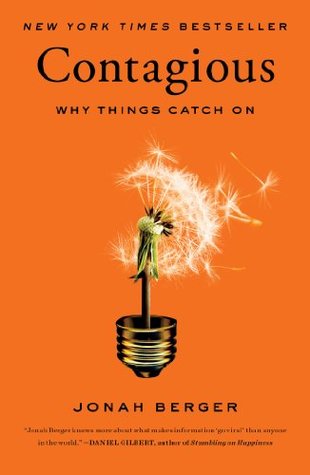More on this book
Community
Kindle Notes & Highlights
Word of mouth is the primary factor behind 20 percent to 50 percent of all purchasing decisions.
Word of mouth is more effective than traditional advertising for two key reasons. First, it’s more persuasive.
Word of mouth, on the other hand, is naturally directed toward an interested audience.
Research by the Keller Fay Group finds that only 7 percent of word of mouth happens online.
To use an analogy, think about jokes. We all have friends who are better joke tellers than we are. Whenever they tell a joke the room bursts out laughing. But jokes also vary. Some jokes are so funny that it doesn’t matter who tells them. Everyone laughs even if the person sharing the joke isn’t all that funny. Contagious content is like that—so inherently viral that it spreads regardless of who is doing the talking.
We need to design products and ideas that are frequently triggered by the environment and create new triggers by linking our products and ideas to prevalent cues in that environment. Top of mind leads to tip of tongue.
Making things more observable makes them easier to imitate, which makes them more likely to become popular.
We make educated guesses about other people based on the cars they drive, the clothes they wear, and the music they listen to.
So to get people talking, companies and organizations need to mint social currency. Give people a way to make themselves look good while promoting their products and ideas along the way. There are three ways to do that: (1) find inner remarkability; (2) leverage game mechanics; and (3) make people feel like insiders.
One way to generate surprise is by breaking a pattern people have come to expect.
People don’t just care about how they are doing, they care about their performance in relation to others.
Why does it matter if particular thoughts or ideas are top of mind? Because accessible thoughts and ideas lead to action.
Even though they hated the slogan, college students ate more fruits and vegetables when cafeteria trays triggered reminders of the health benefits. Just being exposed to a clever slogan didn’t change behavior at all.
These results helped explain why health and education articles were highly shared. Articles about these topics are often quite useful.
According to psychologists Dacher Keltner and Jonathan Haidt, awe is the sense of wonder and amazement that occurs when someone is inspired by great knowledge, beauty, sublimity, or might. It’s the experience of confronting something greater than yourself. Awe expands one’s frame of reference and drives self-transcendence. It encompasses admiration and inspiration and can be evoked by everything from great works of art or music to religious transformations, from breathtaking natural landscapes to human feats of daring and discovery.
People often imitate those around them. They dress in the same styles as their friends, pick entrées preferred by other diners, and reuse hotel towels more when they think others are doing the same. People are more likely to vote if their spouse votes, more likely to quit smoking if their friends quit, and more likely to get fat if their friends become obese. Whether making trivial choices like what brand of coffee to buy or important decisions like paying their taxes, people tend to conform to what others are doing.
Public visibility boosts word of mouth. The easier something is to see, the more people talk about it.
Behavioral residue is the physical traces or remnants that most actions or behaviors leave in their wake.
The way people actually make decisions often violates standard economic assumptions about how they should make decisions. Judgments and decisions are not always rational or optimal. Instead, they are based on psychological principles of how people perceive and process information.
Diminishing sensitivity reflects the idea that the same change has a smaller impact the farther it is from the reference point.
Social Currency Does talking about your product or idea make people look good? Can you find the inner remarkability? Leverage game mechanics? Make people feel like insiders? Triggers Consider the context. What cues make people think about your product or idea? How can you grow the habitat and make it come to mind more often? Emotion Focus on feelings. Does talking about your product or idea generate emotion? How can you kindle the fire? Public Does your product or idea advertise itself? Can people see when others are using it? If not, how can you make the private public? Can you create
...more


